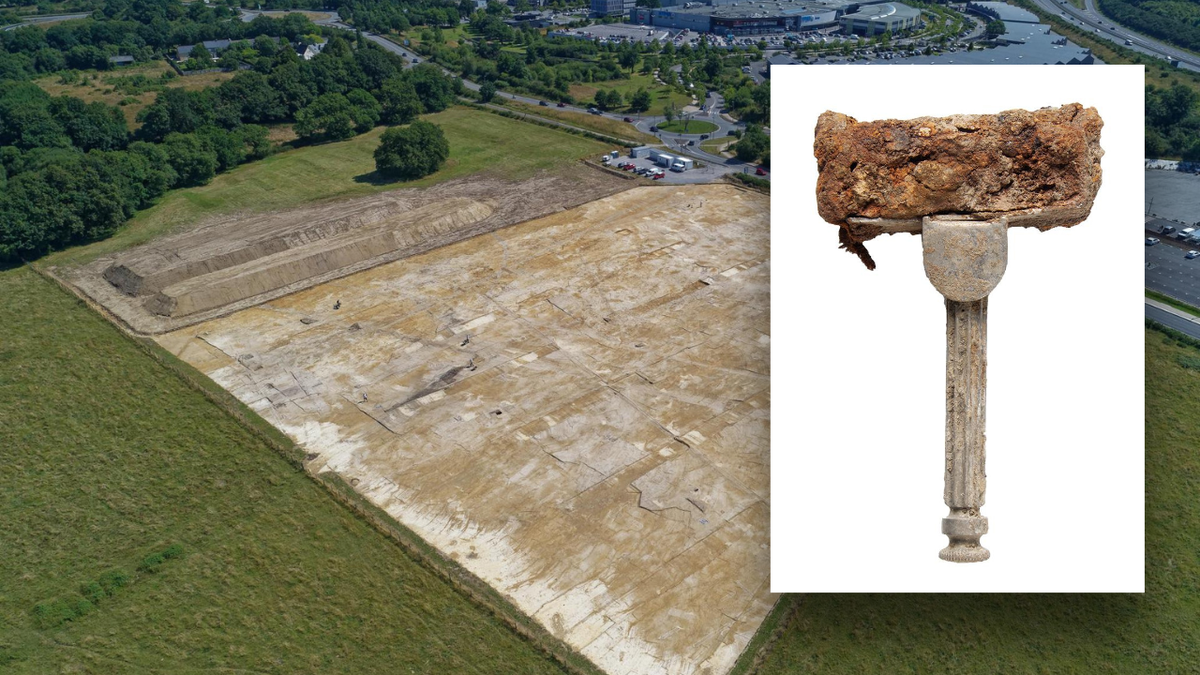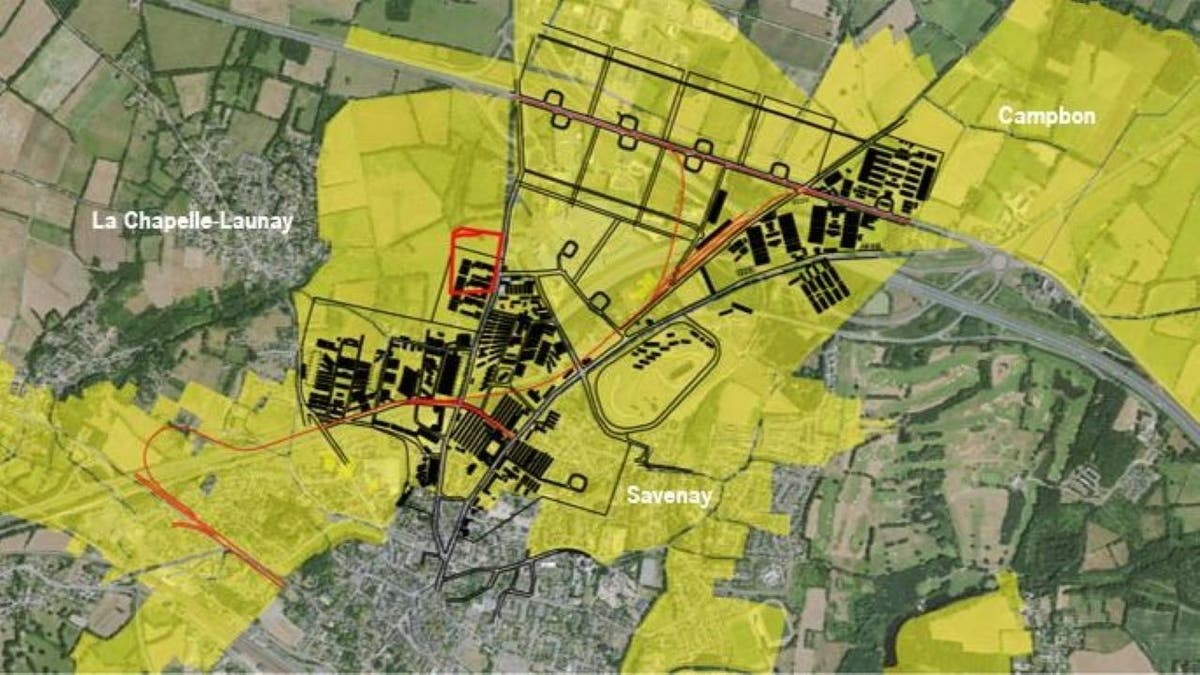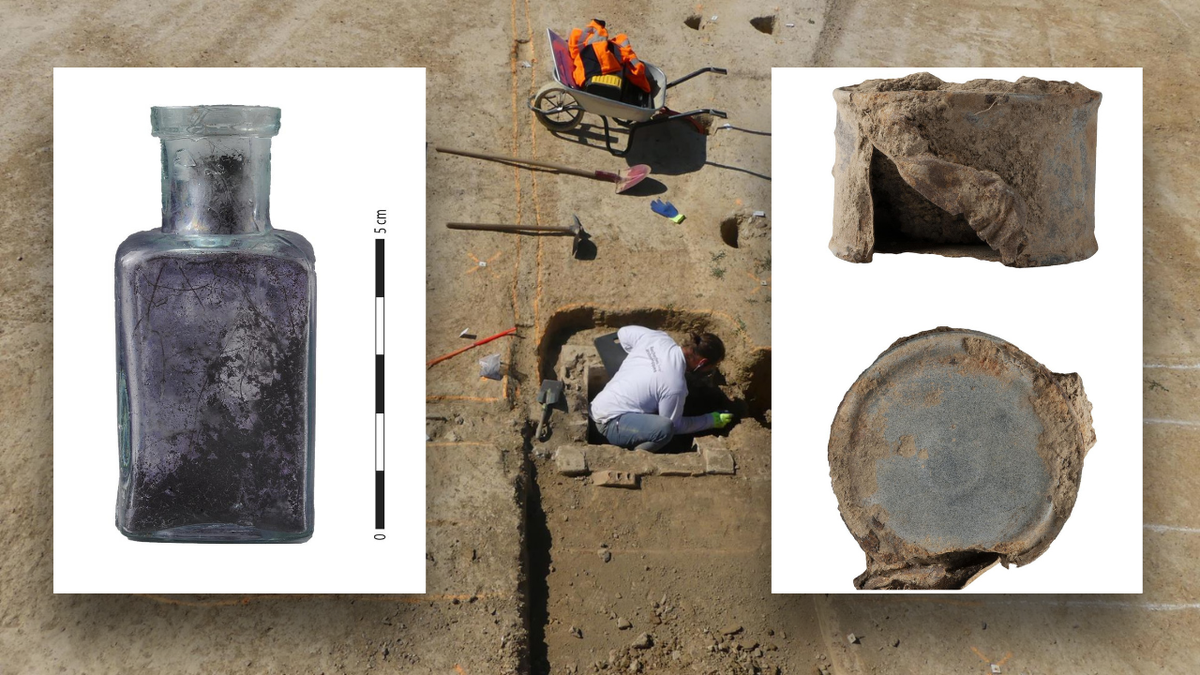Benjamin Hall reveals the true story of World War I’s Christmas Truce
This FOX Nation original special carries viewers through the incredible story of the 1914 ‘Christmas Truce,’ when troops fighting in World War I stopped along the Western front to sing carols.
French archaeologists recently discovered the remains of an American hospital dating to World War I.
In a French language press release translated to English, the National Institute for Preventive Archaeological Research (INRAP) explained the camp was found at Gagnerie du Tertre, located in a town called Savenay. Savenay is in the region of Pays de la Loire in northwestern France.
The recently-excavated hospital, which had been reduced to rubble, was built so Americans no longer needed to rely on French hospitals, the May 16 press release explained.
"Connected by ambulances and medical trains, several hundred hospital structures [were] being built across the country, ranging from simple field hospitals to vast [structures able] to accommodate up to 25,000 injured and sick [people]," INRAP explained.
MICHIGAN RESEARCHERS DISCOVER EERIE 1909 SHIPWRECK AT BOTTOM OF LAKE SUPERIOR

A rusty, century-old razor was among artifacts found at an American hospital built during World War I. (National Institute for Preventive Archaeological Research)
The hospitals were strategically placed near the ports of Nantes and Saint-Nazaire for easy connection to main French rail lines. The first "sammies," or American soldiers, arrived in France in June 1917.
Pictures published by INRAP show archaeologists found medical bottles, combs, buttons and even a smoking pipe during the dig.
ANCIENT SHIPWRECKS, ARTIFACTS DATING AS EARLY AS 3000 BC UNCOVERED BY UNDERWATER RESEARCHERS

The remains of the hospital were found at Gagnerie du Tertre, located in a town called Savenay. (National Institute for Preventive Archaeological Research)
A medical clamp, a razor, a watch case and various cups were also found, along with a pair of shoes.
The site was divided into two distinct parts. One was a fenced area built to protect the hospital. Another was composed of 20 "dump pits" that held both construction waste and artifacts. Archaeologists found proof of a water pipe network that delivered clean water,
INRAP explained that similar American hospital complexes functioned as "real autonomous cities," developing individual sewer networks and sometimes even having its own railway service.
CLICK HERE TO SIGN UP FOR OUR LIFESTYLE NEWSLETTER

An ink bottle and tin cans were among the many artifacts found by archaeologists. (National Institute for Preventive Archaeological Research)
"[The dump pits] testify to a certain homogeneity, both in their digging and their filling, mainly composed of construction waste," the translated press release explained. "The pits located outside the camp have delivered the majority of the archaeological furniture."
INRAP used the dig as an opportunity to teach high school students about preventative archeology. According to the organization, the archaeological excavation offers "numerous research perspectives," and an exhibition about the project will be unveiled Thursday.

INRAP reported the dig provided valuable historical information about Americans during World War I. (National Institute for Preventive Archaeological Research)
CLICK HERE FOR THE FOX NEWS APP
Fox News Digital reached out to INRAP for comment.
For more Lifestyle articles, visit www.foxnews.com/lifestyle.


